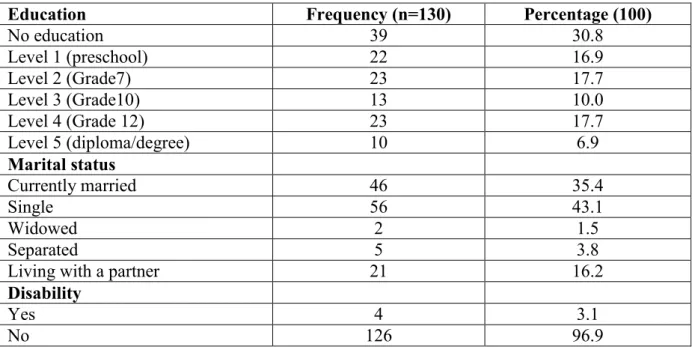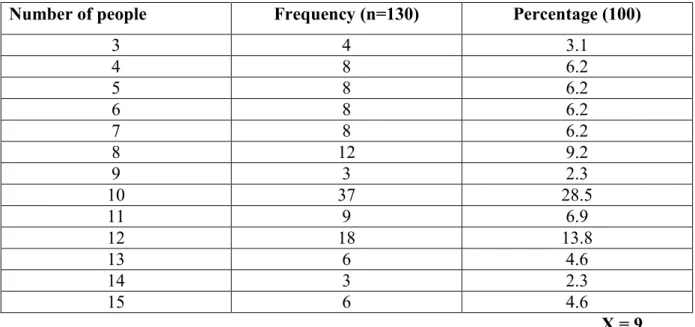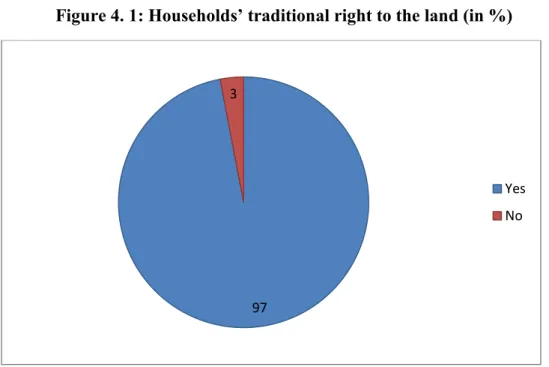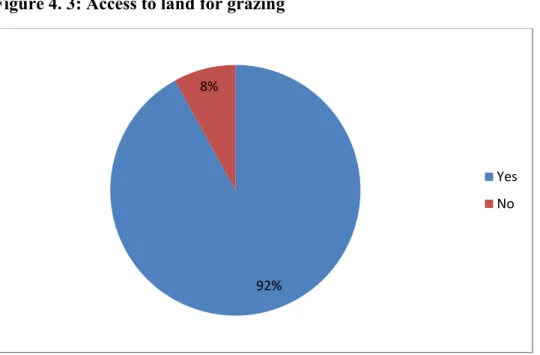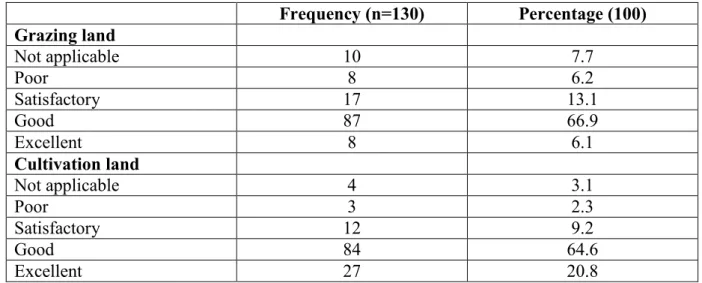Hluhluwe-iMfolozi Park (HiP) community has suffered economically in the past and it is one of the disadvantaged regions in KwaZulu-Natal. Participation in the operation and management of HiP was another benefit identified.
Introduction and Motivation for the Study
There is limited research on the socio-economic impacts of ecotourism in KwaZulu-Natal, a major tourism destination in South Africa. The KwaZulu-Natal Province has 66 provincial parks under the jurisdiction of Ezemvelo KwaZulu-Natal Wildlife (EKZNW), 19 Stewardship Sites (private land) and 27 community-based nature reserves and some of these nature reserves have not yet been fully declared community areas. nature reserves (EKZNW, 2011).
Problem Statement
It is characterized by high levels of poverty, poor subsistence agriculture, unemployment and high levels of illiteracy. This community was chosen for this study due to the fact that it is characterized by a relatively high population density, poverty, unemployment and also by increasingly degraded subsistence agricultural land in the immediate vicinity of the park.
Aim of the Study
Objectives of the Study
Chapter Sequence
Conclusion
Introduction
Key Concepts
- Tourism
- Ecotourism
- Biodiversity
- Sustainability
- Rural Tourism
This person will eventually gain an awareness and knowledge of the natural environment, along with its cultural aspects, which will transform him into a person strongly involved in conservation issues (Tsaur et al., 2006). Tourism is thus already an important feature of the rural economy in these specific locations.
Tourism as a Sustainable Development Approach in Rural Areas
It also suggests that community is defined by social characteristics, such as a set of shared values or culture, rather than a physical place (Etzioni, 1997). The introduction of appropriate or responsible tourism such as ecotourism in rural areas can offer a number of advantages to people.
Pro-Poor Approach to Tourism-based Development
Apart from this, it can also have other benefits for rural areas such as economic growth, diversification, stabilization, job creation, expansion of local services, space for integration of regional development strategies, reduction of emigration and depopulation, maintenance and improvement of public services and infrastructure, revitalization of local culture and identity, community empowerment, protection and improvement of natural and built environment, increased local sense of pride, increased awareness of rural primacy and increased development capacity by policy makers and economic planners (Stronza and Gordillo, 2008) . economic, cultural, environmental, political, land rights and skills) sought from tourism projects.
Sustainable Livelihood Framework
Developing cost-effective ways of livelihood analysis that ensure the needs of the poorest are prioritized. Despite its strengths, Mensah (2012: 7) points out that the SLF needs to be rebuilt as there is an argument that “it tends to be too micro-focused and too domestic, thus limiting its usefulness as a micro- macro analytics for policy analysis. and impact assessment".
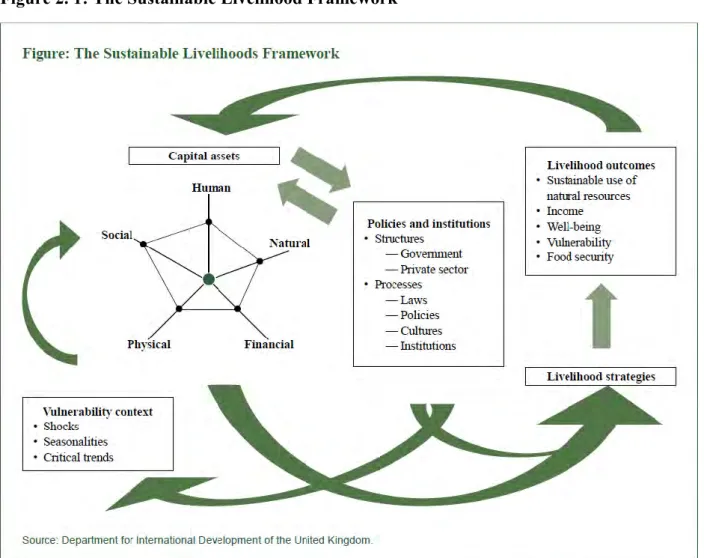
Ecotourism Development in Protected Areas
Rural Communities as Resource Owners in Protected Areas
Through resource extraction (restricted or prohibited in specific contexts), local involvement in tourism development and the provision of economic incentives are important steps to meet the subsistence and livelihood needs of communities in the protected areas.
Ecotourism Impacts
Economic Impacts of Ecotourism
There is much evidence that tourism in Least Developed Countries (LDCs) is hampered because management control of the industry is in the hands of foreign, multinational interests. However, this does not happen because in each round of spending money will flow out leading to economic outflows taking it out of circulation in the economy.
The Social Impacts of Ecotourism
- Demonstration Effect
- Neo-colonialism
- Health
- Tourism and Moral Conduct
- Prostitution
- Crime
Jacob (2008) study on tourism and prostitution in Goa has revealed that clients are aware of the dangers of HIV/AIDS. For example, the introduction of First World tourism in developing countries usually results in a decline in the moral standards of the local population (Spenceley, 2010).
Environmental Impacts of Ecotourism
Fennell (2007) discusses carrying capacity from a sociological perspective and suggests that it is difficult to quantify. Furthermore, (Kim et al., 2013) argue that carrying capacity from a community point of view is related to a destination's ability to absorb tourism before the community feels the negative effects.
Ecotourism and Guiding Principles for its Development
In an environmental situation, the concept applies to the maximum number of people who can use a location without an unacceptable decrease in the quality of the experience gained by tourists (Zhong et al., 2011). From an economic concern, carrying capacity deals with employment and income earned and as long as it is positive and the host community benefits from tourism, the predetermined level is correct (Weaver, 2008).
Rural Development and Tourism
- Rural Development
- Rural Development in South Africa
- Rural Development in KwaZulu-Natal
- Rural Development and Tourism
- Rural Development and Ecotourism
Tourism has been recognized as one of the primary economic industries with the potential to help local communities develop economic diversity (Frauman and Banks, 2011). Although the business is not very promising, there is potential to increase the income of the locals.
Policy Environment in South Africa
- The People and Parks Programme
- The Nature of People-Centred Conservation Approaches
- Protected areas as platforms for poverty alleviation in rural areas
- South African approaches to conservation
- The People and Parks Programme of EKZNW
Some estimates put the total number of people worldwide displaced as a result of the formation of protected areas at over ten million (Dudley et al., 2009). The equivalent approach to conservation has been adopted by authorities in Southern Africa, where local communities have sometimes been consulted in the formation of protected areas (Strickland-Munro et al., 2010a). Protected areas worldwide have increased more than tenfold in terms of total coverage since 1980 (Liu et al., 2010).
Challenges of Ecotourism Development
There are four programs specifically dedicated to job creation opportunities in the environmental sector, that is, People and Parks (focusing on infrastructure), Work for Wetlands (rehabilitation of wetlands), Work for Water (removal of alien vegetation) and Work on Fire (burn). control and prevention) (McConnachie et al., 2013). However, many programs run by NGOs have short mandates and are fund-dependent (Marzano and Scott, 2009), and they usually collapse CBET project when the communities, whose capacities (money, knowledge and skills) are considered insufficient to continue after the programs ended (Linkie et al., 2008). The absence of local participation will lead to inappropriate patterns of management and use of territory and resources by outsiders who have limited knowledge about local land use practices (Linkie et al., 2008).
Conclusion
Introduction
Description of the Study Area
- The Historical Background of the (HiP) and the Nompondo Community
- Reasons for Selection of the Study Area
- Location and Size of the Study Area
- Topography of the HiP
- Drainage system of the HiP
- Climatic Conditions of the HiP
- Soils of the HiP
- Flora and Fauna of the HiP
- Land Use within the HiP
- Vegetation of the HiP
The establishment of the Umfolozi Wilderness Area (Africa's first wilderness area) in the region in 1957 and 1958 was also an important factor (EKZNW, 2011). The Hluhluwe River originates west of the park in the hills surrounding Hlabisa (EKZNW, 2011). In terms of flora, the HiP is typical of the savannah biome of southern Africa and the like.
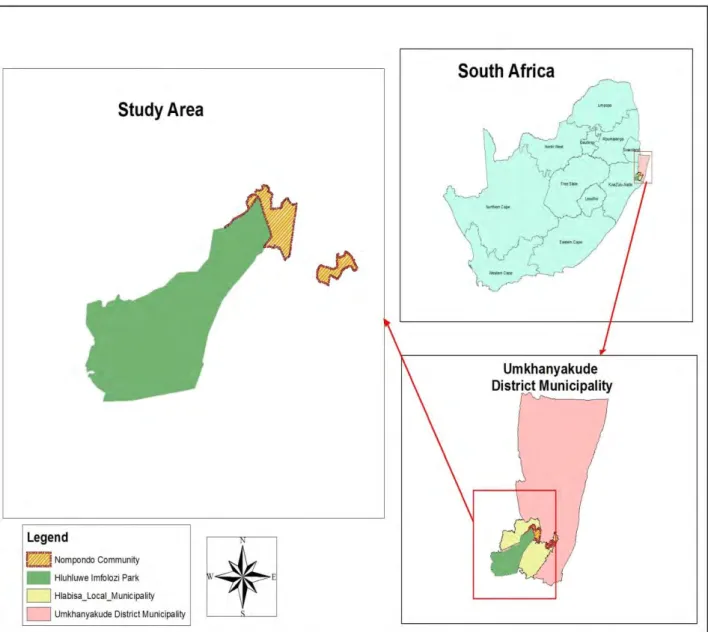
METHODOLOGY
- The Sampling Frame
- Research Techniques/methods
- Sample Size
- Procedure in the Field
- Data Collection
- Survey questionnaires as data collection method
- Data Analysis
- Validity of the study
The purpose of the interviews was to clarify some issues related to the interaction between the HiP leadership and members of the Nompondo community. The researcher used a combination of different methodological techniques to confirm the validity of the study. The use of different data collection methods helped reveal different perspectives of the participants involved in the research.
Limitations of the Study
I used a combination of different methodological techniques to confirm the validity of my data. Yin (2009) argues that external validity can be achieved based on theoretical relationships and these generalizations can be made. It is the development of a formal case study protocol that provides the validity required for all research.
Conclusion
Triangulation is "the use of multiple forms of data and multiple methods of data analysis to increase validity" (Guion et al.
Introduction
Local community living adjacent to HiP
Demographic profile of respondents
In terms of racial classification, the majority of respondents in the Nompondo community were African (99.2%) and one Caucasian was interviewed (Table 4.3). In terms of home language, a significant proportion of respondents in the community speak isiZulu (88.5%), English (6.2%) and isiXhosa (5.4%). Most respondents in the Nompondo community (43.1%) were single, followed by currently married (35.4%).

Household profile
The majority of respondents (93.8%) continue to use latrine toilets in the period after 1994. Previously, respondents living in Nompondo community obtained their water supply from a flowing stream. Furthermore, about 5.4% of respondents indicated that it was 11-15 km away from the HiP border, and this still falls within the Nompondo community.

The community and the ecotourism Parks
Advocates of ecotourism have realized that the participation of local communities is essential for the sustainable development of tourism (Guerrero et al., 2013). 99 percent of respondents from the Nompondo community indicated that they had heard of ecotourism in HiP (Table 4.18). The community's understanding of ecotourism is in line with The International Ecotourism Society's (TIES) definition of ecotourism.
The community and the social impacts of ecotourism
Respondents were asked about their relationship with HiP management or staff. Furthermore, a significant number of respondents from the Nompondo community (83.1%) indicated that tourism has not resulted in the community feeling negatively about their culture. Most of the respondents (97.7%) indicated that the creation of HiP had influenced their lives.
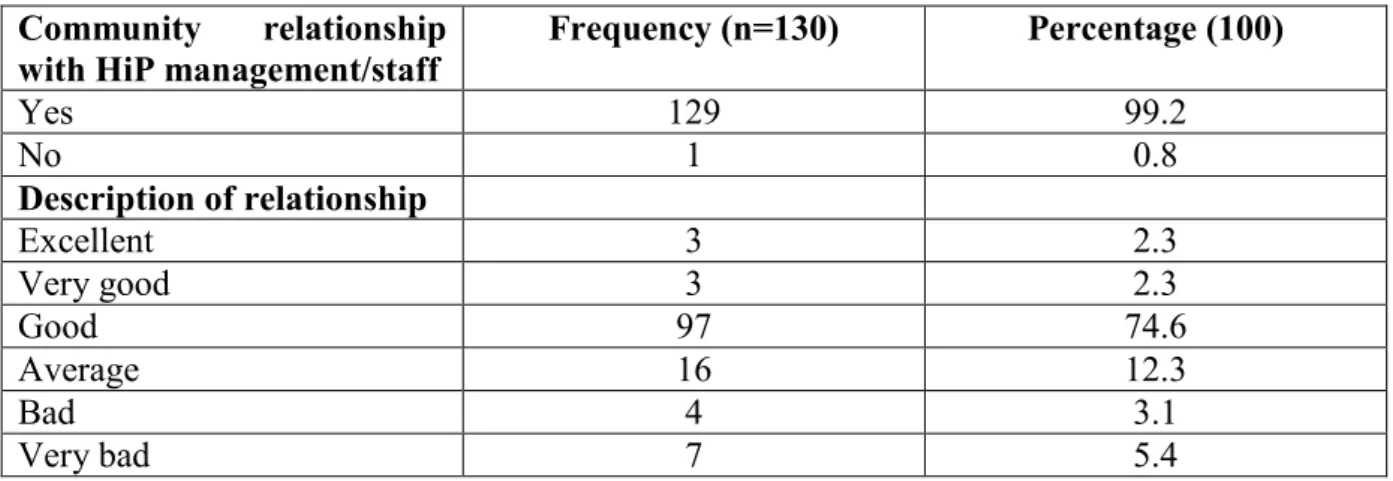
The Community and the Economic Impacts of Ecotourism
In addition, 19.2% of respondents from the Nompondo community also indicated that they also contacted the local consultant to develop a partnership with HiP. Ninety-eight percent of respondents from the Nompondo community indicated that no family member works in HiP. The majority of respondents from the Nompondo community (91%) indicated that they were not aware of any black-owned ecotourism businesses.
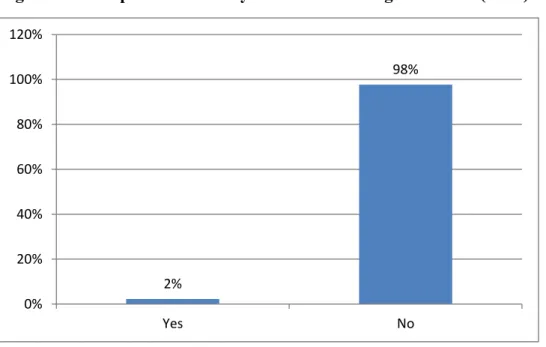
The Community and the Natural Environment
The majority of respondents (40%) from the Nompondo community mentioned that they harvest cover grass from HiP (Table 4.29). Results show that only 3.8% of the respondents admitted that they obtain animal by-products from the Park (Table 4.29). The majority of respondents (57.7%) indicated that they must first apply to the HiP manager for permission to access the natural resources.

Suggestions from the Nompondo Community with Regard to Ecotourism Operations in the
- Benefits Received by the Community from HiP
- Tourism Development in the Community
The results show that 20% of respondents indicated that the park provides some employment to neighboring local communities (Figure 4.6). For example, some respondents mentioned that HiP management sometimes brings tourists to the community. Despite the fact that local communities are involved in the operation and management of the park in various ways, the researcher found that members are not given equal opportunities.
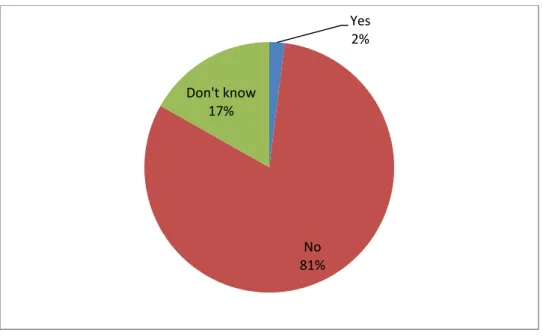
Conclusion
Introduction
Summary of the Key Findings in Relation to the Objectives of the Study
- The extent and nature of interaction between the Nompondo community and HiP
- Types of Tourists Facilities and Resources within HiP that Impact or has the Potential to
- The Nompondo Community’s Involvement in the Development and Promotion of
- The Attitudes and Perceptions of the Nompondo Community Towards HiP
Furthermore, the results showed that the Nompondo community does not fully participate in the operation and management of HiP. The high regard for job opportunities and income generation as benefits in society deserves special attention. The second type of ecotourism development was revealed as a result of the desire to have more tourists visit as well as the establishment of other tourism facilities in addition to the Umkheno tourism project in the community.
Reflections on the Study
Recommendations
HiP management as well as local communities should cooperate and work in partnership with both the government and non-governmental organizations to increase the expenditure of tourists to the communities within the respective regions. The local communities should therefore be encouraged to learn more about the values of the protected natural resources as well as their role in their depletion or maintenance. At the same time, local communities must be motivated and assisted to acquire skills in a number of areas such as community relations, land use planning, poaching control as well as organization and leadership.
Conclusion
From the legacy of apartheid and the reality of unemployment to the history of strained relations between wildlife authorities and local people to 'bureaucratic red tape', the situation in HiP and neighboring communities shows the challenges of promoting environmental protection while supporting the people affected by such policies. Land claims and the quest for co-management of four protected areas in South Africa. Links between nature-based tourism, protected areas, poverty reduction and crises – the case of Wasini Island (Kenya).
Impacts of tourism in two communities adjacent to the Kruger National Park, South Africa. AN INVESTIGATION OF THE SOCIO-ECONOMIC IMPACT OF ECOTOURISM IN RURAL AREAS: A CASE STUDY OF NOMPONDO, A COMMUNITY.

